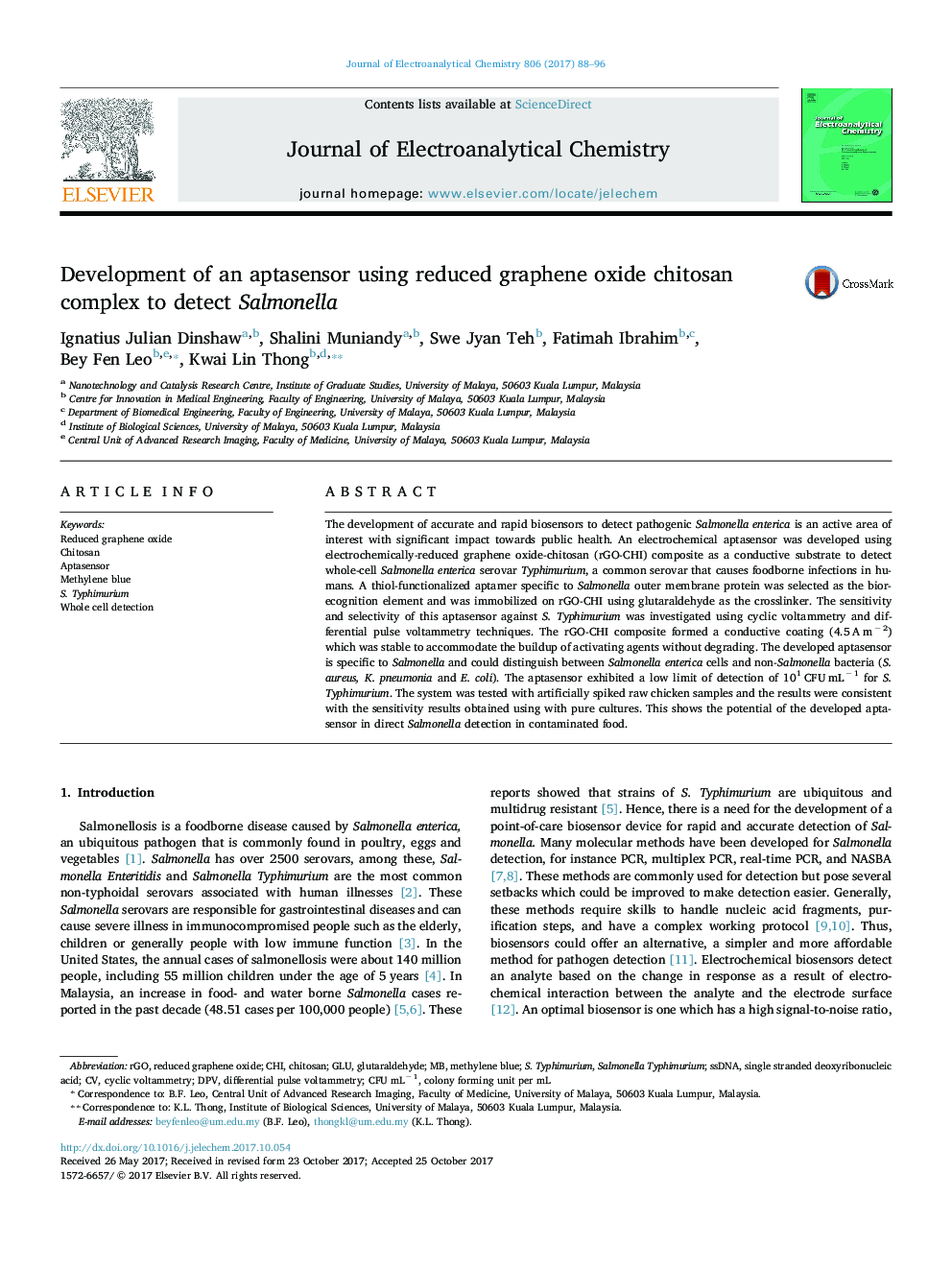| Article ID | Journal | Published Year | Pages | File Type |
|---|---|---|---|---|
| 6662341 | Journal of Electroanalytical Chemistry | 2017 | 9 Pages |
Abstract
The development of accurate and rapid biosensors to detect pathogenic Salmonella enterica is an active area of interest with significant impact towards public health. An electrochemical aptasensor was developed using electrochemically-reduced graphene oxide-chitosan (rGO-CHI) composite as a conductive substrate to detect whole-cell Salmonella enterica serovar Typhimurium, a common serovar that causes foodborne infections in humans. A thiol-functionalized aptamer specific to Salmonella outer membrane protein was selected as the biorecognition element and was immobilized on rGO-CHI using glutaraldehyde as the crosslinker. The sensitivity and selectivity of this aptasensor against S. Typhimurium was investigated using cyclic voltammetry and differential pulse voltammetry techniques. The rGO-CHI composite formed a conductive coating (4.5 A mâ 2) which was stable to accommodate the buildup of activating agents without degrading. The developed aptasensor is specific to Salmonella and could distinguish between Salmonella enterica cells and non-Salmonella bacteria (S. aureus, K. pneumonia and E. coli). The aptasensor exhibited a low limit of detection of 101 CFU mLâ 1 for S. Typhimurium. The system was tested with artificially spiked raw chicken samples and the results were consistent with the sensitivity results obtained using with pure cultures. This shows the potential of the developed aptasensor in direct Salmonella detection in contaminated food.
Keywords
Related Topics
Physical Sciences and Engineering
Chemical Engineering
Chemical Engineering (General)
Authors
Ignatius Julian Dinshaw, Shalini Muniandy, Swe Jyan Teh, Fatimah Ibrahim, Bey Fen Leo, Kwai Lin Thong,
